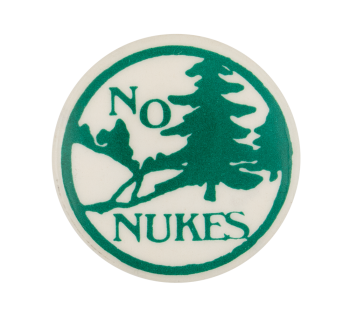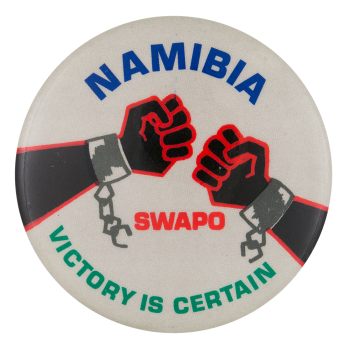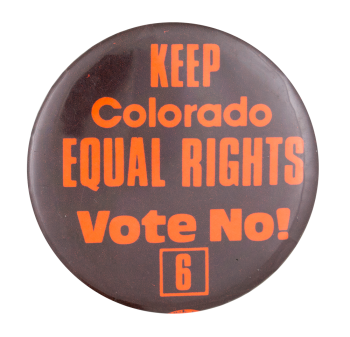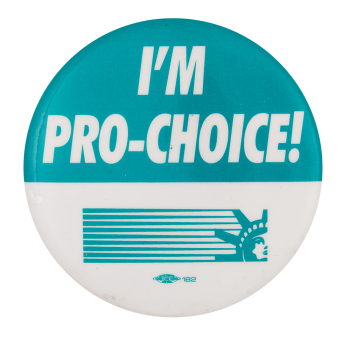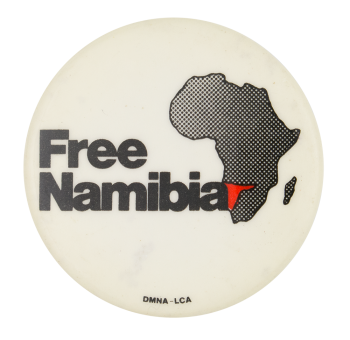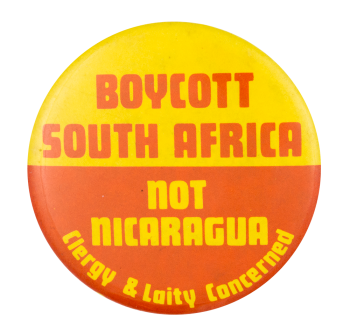No Nukes Forest
| Category | |
|---|---|
| Additional Images | |
| Sub Categories | |
| Text on Button | NO NUKES |
| Image Description | White button with green text and the illustration of a green pine tree among some hills. |
| Curl Text | (201) 538-6676 1977 Donnelly / Colt Buttons Box 271 New Vernon, N.J. 07976 (union bug) |
| Back Style | |
| The Shape | |
| The Size | |
| Year / Decade Made | |
| The Manufacturer | |
| Additional Information | People have been concerned about the effects of nuclear weapons since the mid 1950s, stemming from nuclear tests in the Pacific, but there was no real movement against nuclear power until the early 1970s when some scientists started to raise concerns about the dangers of nuclear power. The movements combined into an international antinuclear movement that encompassed both antinuclear power and antinuclear weapons activities by the mid 1970s. This button was made in 1977 and became an international symbol of the antinuclear movement. It was used to protest the proposed creation of a floating nuclear power plant off the coast of New Jersey. This power plant was proposed in the early 1970s and canceled in 1978 after environmental protests. |
| Sources |
thinkpinkrobot. (2016, July 9). Vintage no nukes 1977 anti Atlantic Nuclear Power Plant peace button pin pinback. Ebay. |
| Catalog ID | CA0468 |

